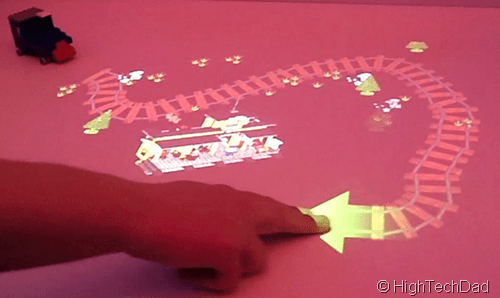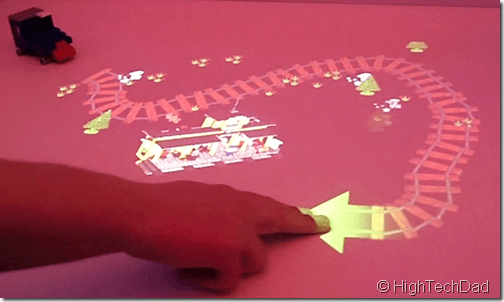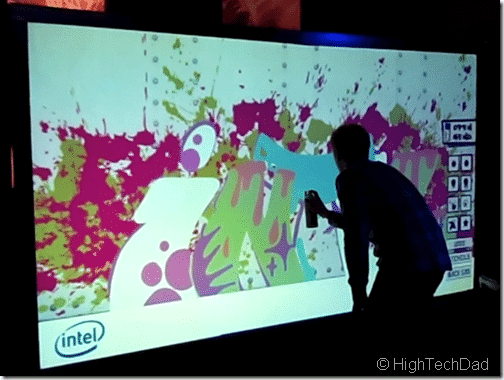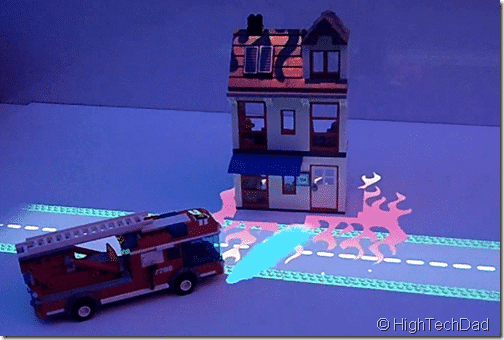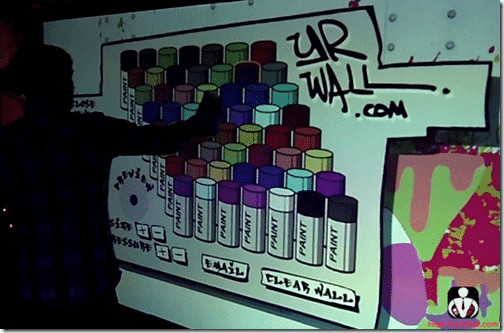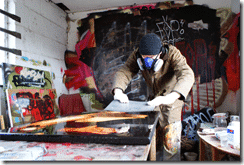There was a lot to see at CES 2011, so much so that next year I’m considering having an Intel processor installed in my brain just to try to analyze all of the information I consumed at the expo. Honestly, with all of the recent innovations coming from Intel recently, I wouldn’t be surprised that somewhere deep within their Labs division (which I particularly love, by the way) their isn’t an initiative already underway that does just that.
All that I can talk about is what I read about or have seen personally. And that is exactly the subject of this post. There were two “products,” and I use that term very loosely here simply because much of the development that we see coming from the Intel Labs organization never really materializes as an actual product. Sometimes the inventions are fully developed, other times they are partially incorporated into something else, and often they simply “disappears”. One of these projects was from the Labs organization and the other was simply something creative that was developed using Intel technology.
Here are two Intel items that I saw at CES that I wanted to share: “Bringing Toys to Life“…
…and the “Digital Graffiti Wall“:
Let’s first start with a video that show both in action:
Bringing Toys to Life
What I witnessed at CES was mind boggling as you hopefully saw from the video above. Essentially using 3D optical recognition, a projector and a computer, a static, inanimate object had life and imagination breathed into it, using Lego’s as the basis. This project came from the OASIS/Perceptive Home group and is just a portion of the technology coming from that group. OASIS stands for Object Aware Situated Interactive System. The system uses a combination real-time camera vision, 3D cameras and micro-projectors to identify and track physical objects and gestures. Using the micro projector system, digital overlays can be projected onto a variety of surfaces, as you saw with the Lego demonstration above.
This technology is cutting edge but I’m starting to think that it is getting closer then we think. Right across the aisle from the Intel Lego demonstration was the Microsoft Xbox Kinect demo area and I couldn’t help to think how these technologies were extremely similar. Using spatial perception and monitoring of movements while tracking objects, both of these technology I think offer a glimpse of what is to come in an interactive household or office.
I had a private group meeting with Genevieve Bell, Cultural Anthropologist for Intel, and one interesting thing that stuck in my mind was the fact that she made a comment about how keyboards are such an old concept but still such a required input device (perhaps not exactly those words). The OASIS project moves users away from that keyboard dependency and into the 3D space around them, providing new an innovative ways to interact with objects or environments.
With the “Bringing Toys to Life” project, at first I was a bit concerned that this was just another example of technology being used to stifle the imagination of kids. All too frequently, we come across toys that essentially strip away any imaginative power because they have everything built in to the toy. Click a button and the toy comes to life with the same story over and over. I personally frown on those types of 1-path only toys. I learned that this Intel Labs item has much more imagination built into it. That is to say, you get full control over your environment. If you want the dragon to bark instead of roar, you simply tell the system to do it that way. If you want the fire truck to breath fire, that can be done as well.
The OASIS group has come up with some other creative uses of this technology including:
- A chess-playing computer that watches its opponent and then moves based on the actions of the opponent.
- Tablet computers that can recognize objects that have been placed on it. Imaging your kids learning to count the value of coins and then checking their answer by simply placing them on the tablet.
- Remote controls have gotten pretty darn intelligent, so how can they get even smarter? How about “learning” who is using it by how they hold it and customizing the remote based on their preferences?
When I went to the Intel Developer Conference in San Francisco last year, one of the most interesting sections of the Intel show was that of the Labs group. Also, as part of the Upgrade Your Life summit that I attended, Labs certainly got everyone excited about the promise that the future could bring from a technology perspective. Again, many of the Labs initiatives don’t ever see the public but still it is interesting seeing them showcased.
Digital Graffiti Wall
Another “cool” (to use a term that is quite appropriate for what I’m going to talk about) thing that I saw was at the Intel Visual Life party. While not a Labs product, it is technology that is powered by Intel. It was a Digital Graffiti Wall, called the YRWall. Supposedly there are only two of these in the United States and one of them was at the party.
It was pretty interesting how the Artist, Mr. K a.k.a. KOSH, was literally “painting” the large screen. He has a special spay paint can (below) that interacted with the screen where he could select and mix colors and then “spray” the digital canvas. The YRWall is created by a company called Lumacoustics and features a variety interactive painting effects like swirls, splats and drips, all powered by Intel processors.The spay can’s cap actually contains infrared emitters that “spray” infrared light onto the TV screen which is tracked by the computer, allowing the “paint” to appear.
In the video above, you can see the wall in action, but it wouldn’t be complete without an artist to power it. KOSH started out as a south London graffiti writer known for his bold characters. After a few years of artistic expression on the streets, he decided to focus his energy to working in the studio. He currently has two homes, one in south London England and one in Amsterdam, Netherlands.
Always Innovating
One of the great things about being part of the Intel Advisors program is getting the exposure to technologies and products that I have never heard about or even, for that matter, thought about. From embedded chips to SmartTVs to powering an imaginative, interactive environment for Lego’s to be used by children, Intel is “inside” a lot more things that we know about, and they are researching people’s interactions, cultures and behaviors to understand why we do things and how we work and play with technology.
Spending just a few hours at the Intel booth at CES doesn’t do them justice. There is so much to learn and understand but the biggest take-away for me was and still is – they are not just a chip company. They do much much more.
Disclosure Text: I am part of the “Intel Advisor” program and am compensated and/or receive other value from Intel to attend events on their behalf, including the 2011 CES show. My opinions about Intel and my writing are entirely my own and not those of Intel, nor subject to their editorial approval. More information can be found in my About page as well as here.
HTD says: After CES, I’ve definitely got “Intel Inside” my brain!
